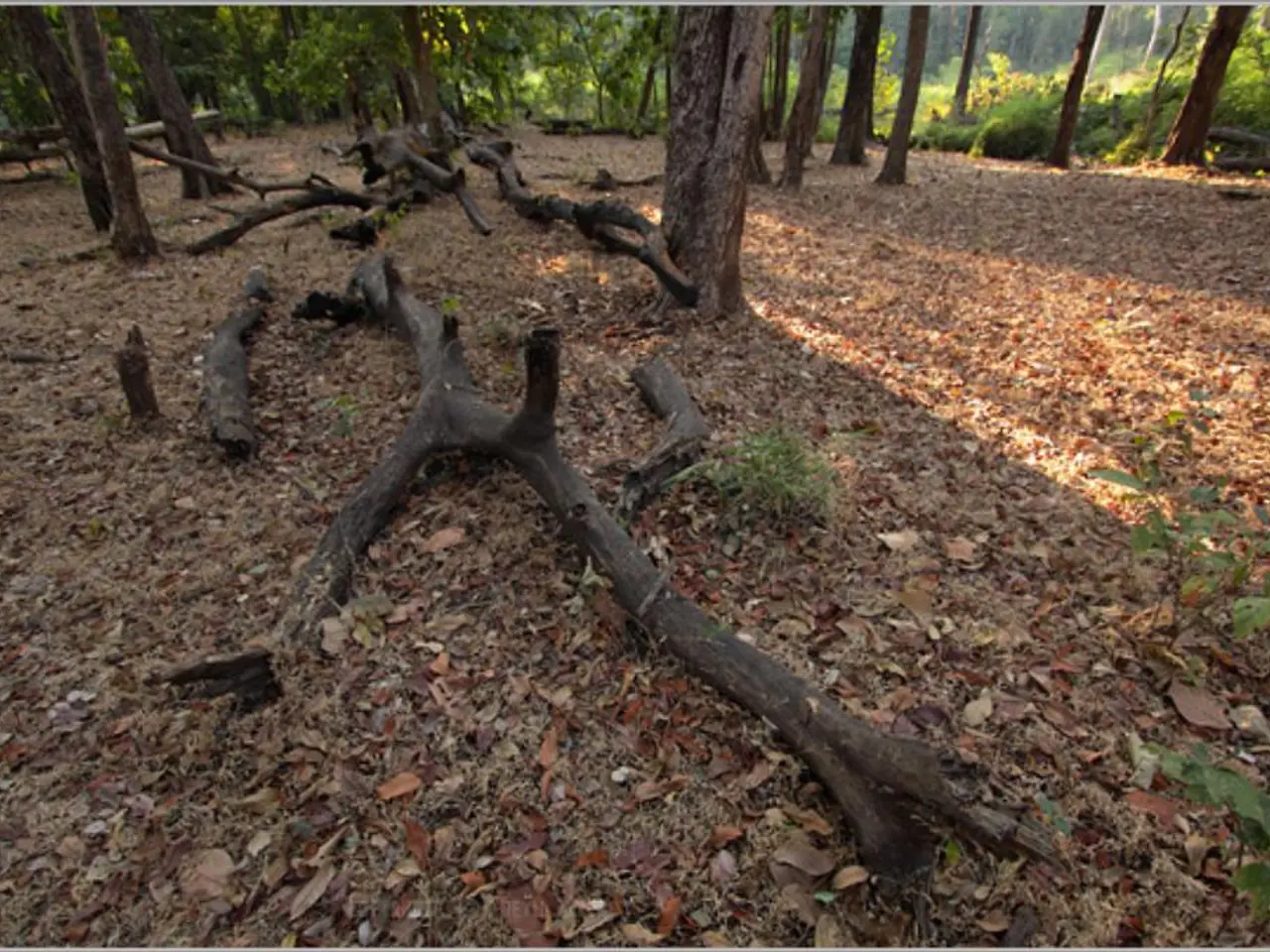Forest-bound Scientific Exploration
Autumn is an enchanting time of year, and the forest transforms into a vibrant canvas of colours as leaves change, revealing a kaleidoscope of hues. This season offers a wealth of opportunities for outdoor science activities that are both fun and educational.
One of the most striking phenomena of autumn is the transformation of leaves. **Leaves change colour in autumn because chlorophyll, the green pigment essential for photosynthesis, breaks down due to shorter daylight hours and cooler temperatures.** As chlorophyll degrades, it no longer masks other pigments in the leaves, such as yellow and orange carotenoids and red anthocyanins, which then become visible and give the leaves their vibrant fall hues.
Trees play a crucial role in our environment, particularly during autumn, as they produce the most oxygen through photosynthesis. This process mainly occurs in their leaves, where chlorophyll absorbs sunlight to convert carbon dioxide and water into carbohydrates and oxygen as a by-product. The amount of oxygen produced depends on how active photosynthesis is, which is influenced by factors such as the amount of leaf surface area, availability of sunlight, water, and carbon dioxide. Trees with abundant, healthy leaves exposed to ample sunlight produce the most oxygen.
In the forest, there's no shortage of activities to engage in. An autumn treasure hunt can be attempted, where you can collect treasures like pinecones, conkers, and acorns. Smaller sticks work better for Pooh Sticks to prevent getting stuck. A twig spotter sheet from The Woodland Trust can be used to identify various types of trees.
If you're interested in learning more about the trees and plants around you, consider creating a wildlife journal to record animals and plants seen during forest visits. Dissecting a flower or plant can help learn about the different parts. Steamsational provides information about which trees produce the most oxygen, while The Wildlife Trust offers useful animal and plant spotter sheets.
For those who enjoy crafting, you can create a Stick Man craft or a toilet roll bird feeder using designs from Fireflies and Mudpies. Making a potion involves experimenting with different stick shapes and sizes for stirrers. Activities with leaves and pine cones include finding out how water travels through a leaf and collecting pinecones to make a pine cone weather station.
A catapult-shaped stick can be found and used for various material experiments as the sling. A game called "Who's behind you?" involves creeping up on others and testing how quiet one can be while standing on leaves and sticks. The game "What can you hear?" encourages standing still and listening carefully to identify different sounds.
Lastly, if you're curious about the age and height of a tree, there are ways to estimate these without climbing it. One can attempt to determine the age of a tree, and it is possible to find out how tall a tree is without climbing it.
Embrace the beauty of autumn and the wonders of the forest by partaking in these engaging outdoor science activities. Happy exploring!
[1] https://www.britannica.com/science/chlorophyll [2] https://www.sciencedirect.com/topics/biochemistry-genetics-and-molecular-biology/carotenoid [3] https://www.sciencedirect.com/topics/agricultural-and-biological-sciences/anthocyanin [4] https://www.ncbi.nlm.nih.gov/pmc/articles/PMC6572297/ [5] https://www.ncbi.nlm.nih.gov/pmc/articles/PMC5664031/
- The change in leaf color during autumn is a result of chlorophyll breakdown due to shorter daylight hours and cooler temperatures, revealing the previously masked yellow, orange, and red pigments.
- Trees contribute significantly to our environment by producing the most oxygen during autumn, a process facilitated by their leaves, where chlorophyll absorbs sunlight for photosynthesis.
- Outdoor activities during autumn, such as an autumn treasure hunt or creating a wildlife journal, offer exciting opportunities for kids to engage in environmental-science, home-and-garden, and education-and-self-development activities.
- Science experiments involving leaves and pine cones, like discovering how water travels through a leaf or making a pine cone weather station, can be both fun and educational for kids, helping them learn about the environment and nature.
- Crafting activities, such as creating a Stick Man craft or a toilet roll bird feeder, can be perfect for outdoor-living enthusiasts who want to incorporate artistic activity in their lifestyle while learning about the surrounding environment.
- For those interested in further investigating trees and plants, research articles like [1], [2], and [3] provide in-depth knowledge about chlorophyll, carotenoids, and anthocyanins, respectively.
- To ensure a safe and enjoyable outdoor experience, it's essential to follow instructions carefully, whether that's for creating a catapult-shaped stick or playing games like "Who's behind you?" or "What can you hear?"




